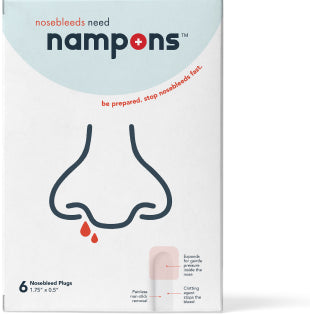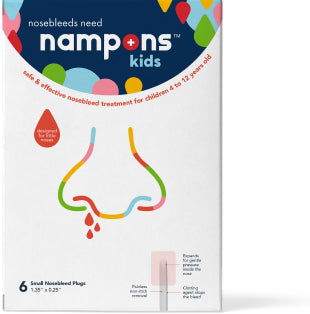Hereditary Hemorrhagic Telangiectasia (HHT) cannot be prevented or cured, but its symptoms can be treated. The treatment plan that works best for you will depend on your specific symptoms and needs, but there are several options available, including:
Treating Nosebleeds
9 out of 10 individuals suffering from HHT will experience nosebleeds. For some, these nosebleeds are short, infrequent, and easily managed; for others, they are heavy, frequent, and problematic.
Nosebleeds may be worsened by diet and lifestyle choices, as well as living conditions. In the first instance, you should make some small changes that could improve your condition, including:
- Use a saline spray to moisten your nasal lining
- Stop picking your nose
- Use a humidifier in dry environments
- Keep a food diary to detect triggers (could include coffee, alcohol, and chocolate)
- Don't blow your nose too forcefully
If the nosebleeds persist, consult with your healthcare provider. They may recommend one of the following treatments:
- Coagulation therapy designed to coagulate the blood
- Embolization to block an artery and stop it from rupturing and bleeding
- Medications to slow clot disintegration, including tranexamic acid
- Septodermoplasty, whereby skin grafts replace the nasal mucosa
- Nasal closure therapy to close the nasal passages. However, this will prevent nasal breathing and affect both smell and taste.
Treating Blood Vessel Abnormalities
Arteriovenous malformations (AVMs) are abnormal blood vessel formations that can occur in the brain, GI tract, lungs, liver, and spine of HHT patients.
The location of these blood vessel abnormalities will determine their side effects and possible treatments. The most common treatments include:
- Embolization: A device is used to prevent abnormal blood flow and relieve pressure on the blood vessels.
- Surgery: A piece of the tissue is removed.
- Laser and Radiosurgery: Lasers or radiosurgery is used to blast and destroy the AVM tissue.
- Drug Therapy: An array of drugs can be prescribed to manage arteriovenous malformations, including immunosuppressants, antibiotics, antiangiogenics, and antifibrinolytics.
Brain Vascular Malformations
Arteriovenous malformations that occur in the brain could rupture and cause hemorrhagic stroke, necessitating treatment. This treatment typically includes embolization therapy, radiosurgery, or surgical removal.
Liver Vascular Malformations
Liver AVMs are very common in HHT patients and they typically don't require treatment. If treatment is needed, it is often invasive and could exacerbate the symptoms.
Lung Vascular Malformations
Lung AVMs can cause symptoms such as exercise fatigue and difficulty breathing. If complications arise, they could cause a stroke or brain abscess.
Embolization is often used to treat these blood vessel abnormalities. In serious cases, part of the lung can be removed.
GI Tract Vascular Malformations
Drugs and laser therapies are the most common treatments for AVMs that occur in the gastrointestinal tract.
Spinal Vascular Malformations
Spinal AVMs occur in around 1% of HHT patients. They are often treated using embolization, but surgical intervention may be required.
Treating Iron Deficiency Anemia
Heavy bleeding can cause iron deficiency. It's more common in women than it is in men and pregnant women are more than twice as likely to have greatly reduced iron levels.
If you're in a high-risk category and have recurrent nosebleeds, you should speak with your healthcare provider. They can conduct tests to check your iron levels and may then prescribe oral supplements or dietary changes.
Heme iron is the most easily digestible form and comes from animal sources, including red meat, offal, and poultry. Non-heme iron is found in beans, lentils, seeds, tofu, and some dried fruits.
Vegetarians and vegans are more susceptible to iron deficiency and may need iron supplements to ensure they meet their dietary intake.
Summary: Treating Hereditary Hemorrhagic Telangiectasia
From nosebleeds caused by ruptured telangiectases to blood vessel abnormalities caused by AVMs, all the symptoms and complications of HHT are treatable.
Just because there is no cure doesn't mean you should give up. Speak with your healthcare provider, ask about treatments, and find the best options for you.



